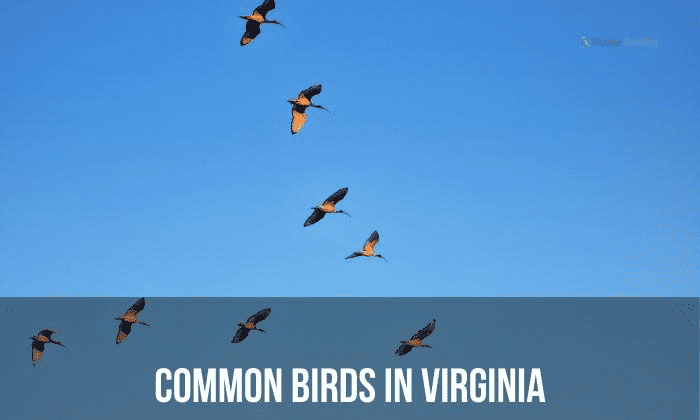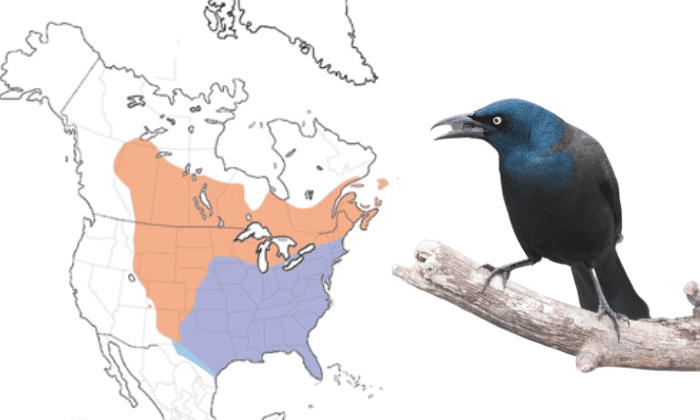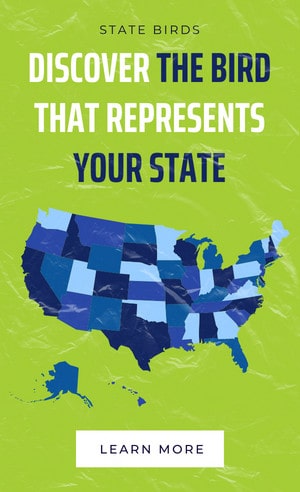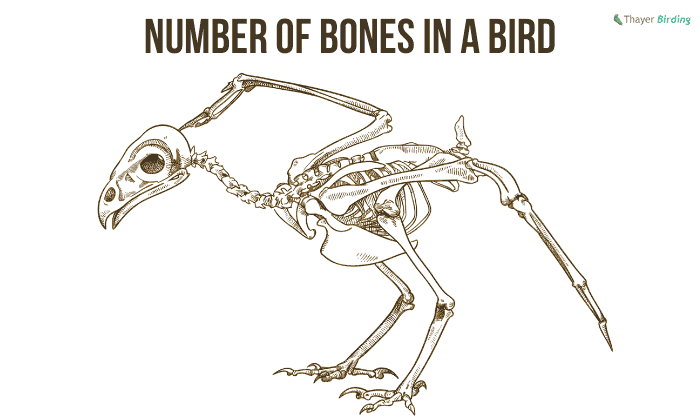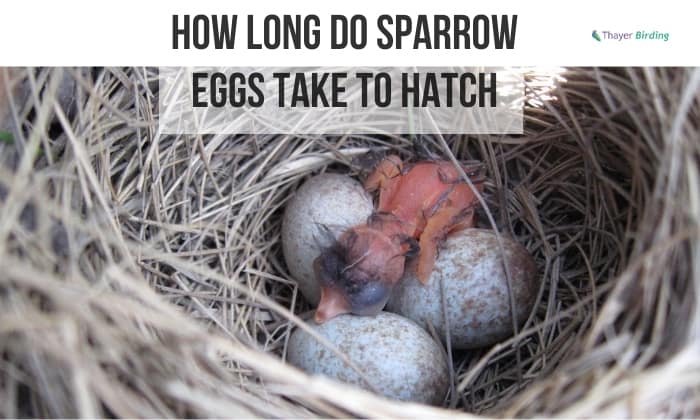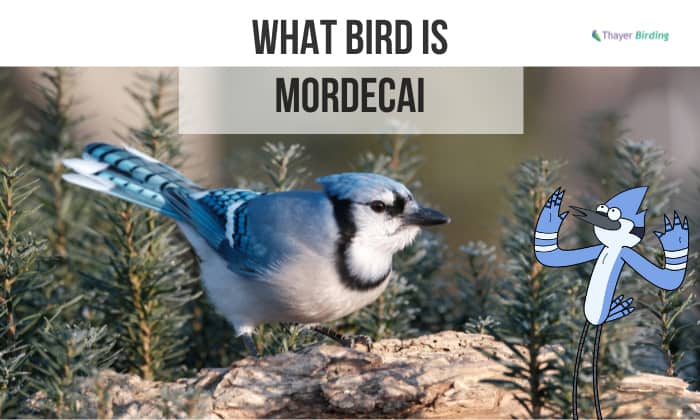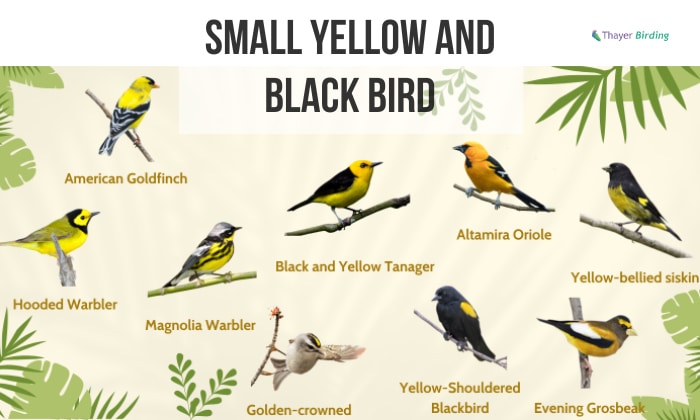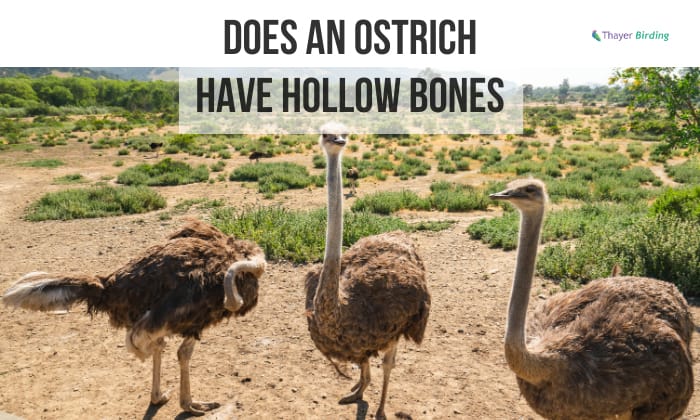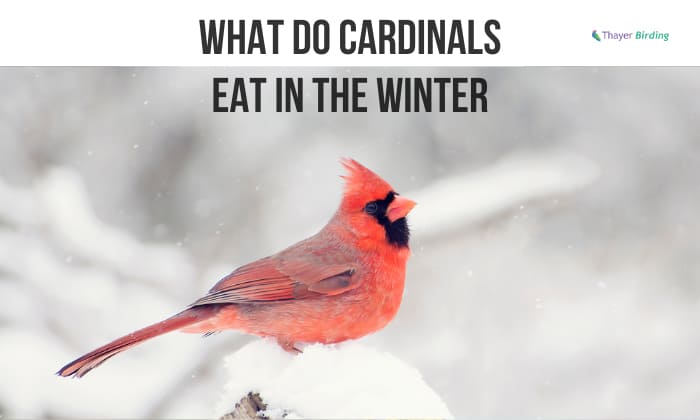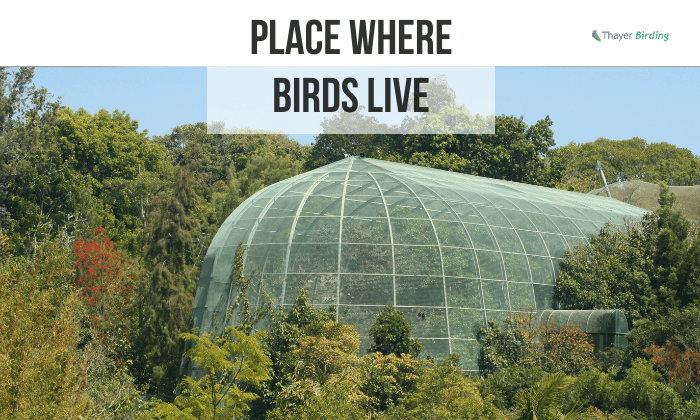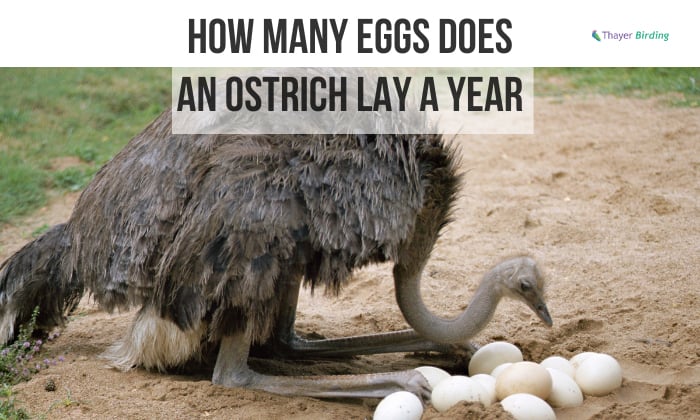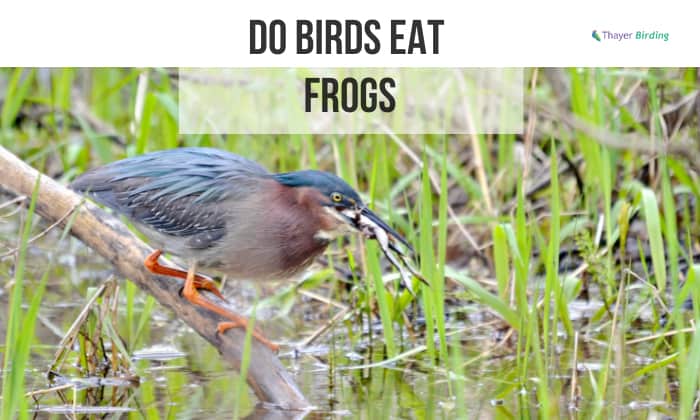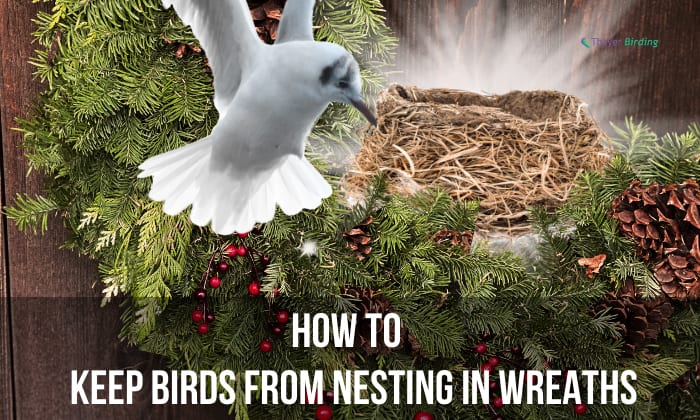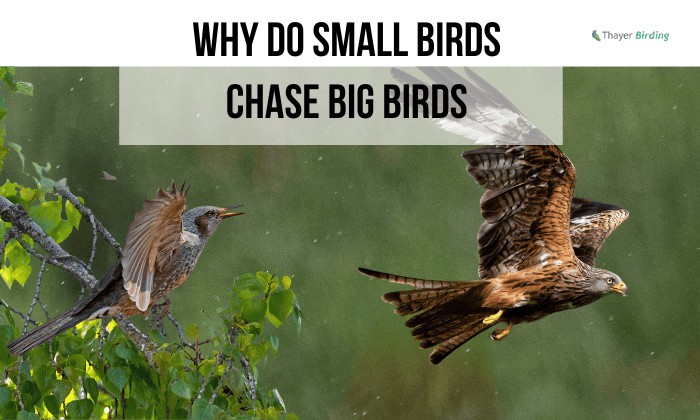Officially declared a state in 1788, Virginia is known for the Appalachian Trail, oysters, and being the home state of four of the first five American Presidents.
However, Virginia is notable for another reason: being the home of over 400 species of birds! Some birds live in the state year-round, from songbirds to scavengers, while others only do during certain seasons.
Common birds in Virginia include the Northern Cardinal, Blue jays, Red-bellied Woodpeckers, House Finches, Mourning Doves, and many more.
Read on for a bird identification guide for eighteen of them!
Table of Contents
- List of Common Birds in Virginia
- 1. Northern Cardinal (Cardinalis cardinalis)
- 2. Blue Jay (Cyanocitta cristata)
- 3. Red-bellied Woodpecker (Melanerpes carolinus)
- 4. American Robin (Turdus migratorius)
- 5. Mourning Dove (Zenaida macroura)
- 6. Carolina Wren (Thryothorus ludovicianus)
- 7. House Finch (Haemorhous mexicanus)
- 8. Tufted Titmouse (Baeolophus bicolor)
- 9. Carolina Chickadee (Poecile carolinensis)
- 10. American Goldfinch (Spinus tristis)
- 11. White-breasted Nuthatch (Sitta carolinensis)
- 12. Northern Mockingbird (Mimus polyglottos)
- 13. European Starling (Sturnus vulgaris)
- 14. American Crow (Corvus brachyrhynchos)
- 15. Eastern Bluebird (Sialia sialis)
- 16. Common Grackle (Quiscalus quiscula)
- 17. Indigo Bunting (Passerina cyanea)
- 18. Dark-eyed Junco (Junco hyemalis)
- Conclusion
List of Common Birds in Virginia
Virginia isn’t just home to little brown birds like sparrows.
Depending on your area, the season, and what you put in your feeder, you can spot any of these Virginia birds in your backyard.
1. Northern Cardinal (Cardinalis cardinalis)
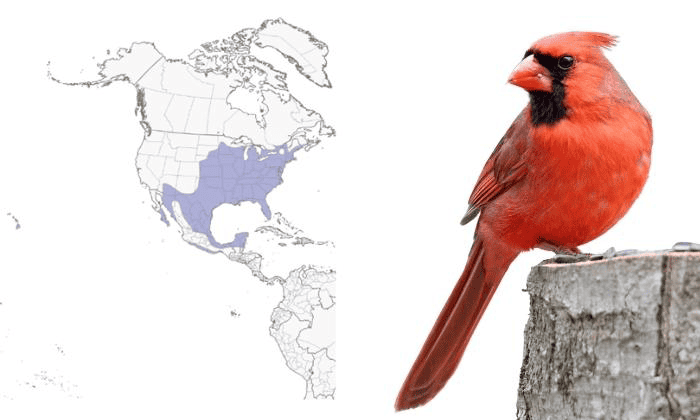
Aside from being birds native to Virginia, Northern Cardinals are Virginia’s state bird. These birds are found across the state year-round.
These birds are almost always pure red with black facial feathers. They are large birds with an average wingspan of 11 inches long and a body between 8-9 inches.
Their bright color and cheerful chirping and singing have led them to become positive symbols of luck, harmony, energy, and devotion.
Northern Cardinals live anywhere with lots of food, particularly in gardens, parks, and the edges of forests. While they aren’t picky, their favorite food is black oil sunflower seeds!
2. Blue Jay (Cyanocitta cristata)
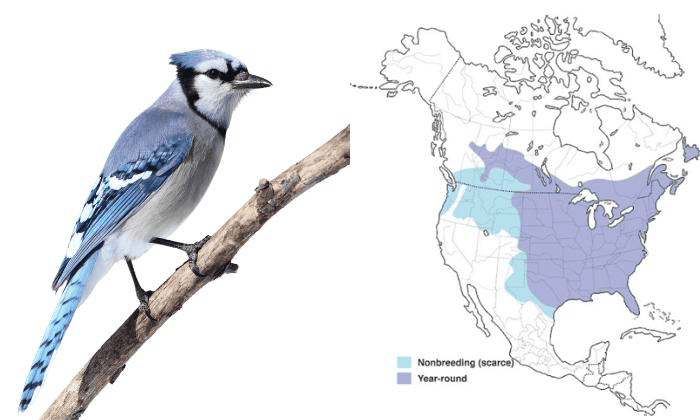
As their name suggests, blue jays are bright blue birds with some white and black markings, particularly along their wings. They make various sounds, from clicking noises to high-pitched caws and deeper yelps.
Blue jays are bigger than Northern Cardinals, with an average wingspan of 15 inches and a body length of 10-12 inches.
Blue jays live in areas with plenty of trees and residential areas. While they love nuts, seeds, acorns, and bugs, these opportunistic eaters have no problems with leftover human food.
3. Red-bellied Woodpecker (Melanerpes carolinus)
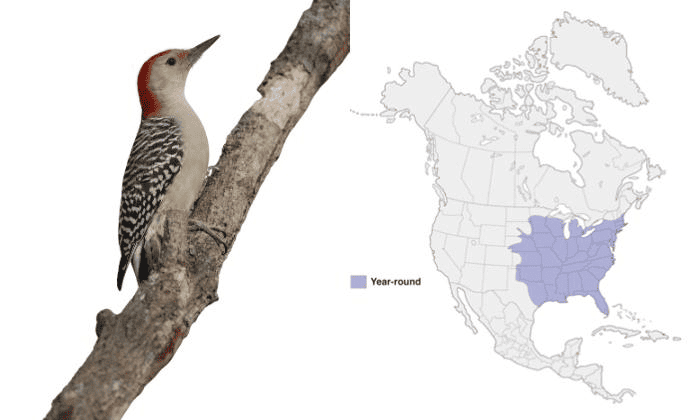
The red bellied woodpecker can be spotted in the state any time of the year.
They are, on average, 9 inches long with a wingspan between 13-16.5 inches. They have a distinct black-and-white spotted pattern on their wings and a deep red patch behind their heads.
“Wait, if they are red-bellied, why do their bellies appear white?” you wonder. Don’t worry; it’s not just you–the red on their bellies is very light and pale, making it difficult to spot for all except the experts.
These woodpeckers are often found in woodlands but are frequent visitors to bird feeders. They enjoy seeds, nuts, fruit, and insects.
There is a belief that seeing a red-bellied woodpecker is a sign to take a chance and leap of faith. So if you spot one in your backyard, the universe is telling you to be brave!
4. American Robin (Turdus migratorius)
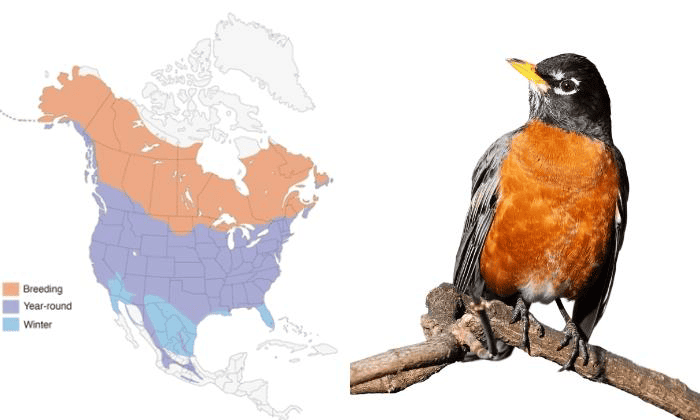
American robins are commonly spotted across the United States year-round, save for a few southern states. While the same is true in Virginia, they become much more visible between late February and the end of March as flocks migrate.
These birds have rusty red chests and bellies paired with dark brown or grey heads, backs, and wings. They are 10 inches long on average.
American robins are songbirds that chirp a variety of loud calls. They are also known for their bright blue eggs.
5. Mourning Dove (Zenaida macroura)
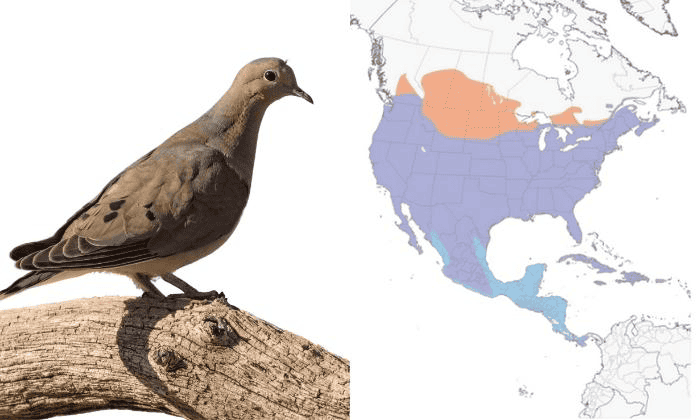
The Mourning Dove is Virginia’s most common dove species, followed closely by the Rock Pigeon. Their name is said to originate from their melancholy cooing sound.
As year-round Virginia residents, mourning doves nest and breed in-state. They are often spotted in woodlands and residential yards, pecking on seeds, greens, and berries. Insects are not a regular part of their diet.
However, these brown birds are prevalent throughout the country, with an estimated population size of more than 400 million in the United States. Because of their popularity, they have a slew of other nicknames, including turtle dove, rain dove, and Carolina Pigeon.
6. Carolina Wren (Thryothorus ludovicianus)
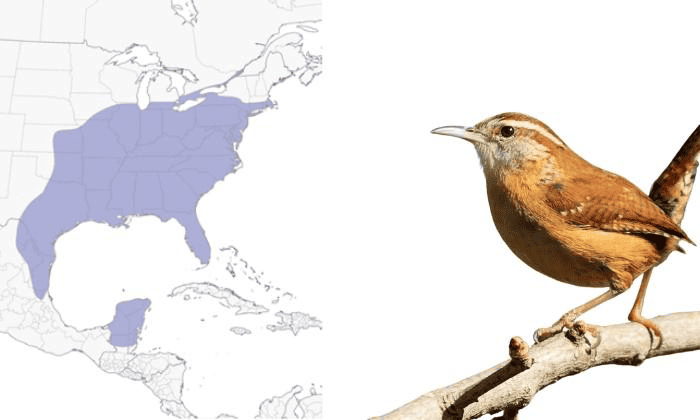
Carolina wrens are small birds, only 5 inches long, with a wingspan of 11 inches. Despite this, they are the largest wren species in eastern North America.
These wrens are year-round residents of Virginia that can be spotted in forests and gardens and hold the title of the official state bird of South Carolina.
Carolina wrens’ diet consists primarily of insects and small animals like frogs, lizards, and snakes. However, they occasionally eat seeds, nuts, and berries.
This songbird represents new beginnings and good luck, so keep your eyes and ears open for these little brown birds!
7. House Finch (Haemorhous mexicanus)
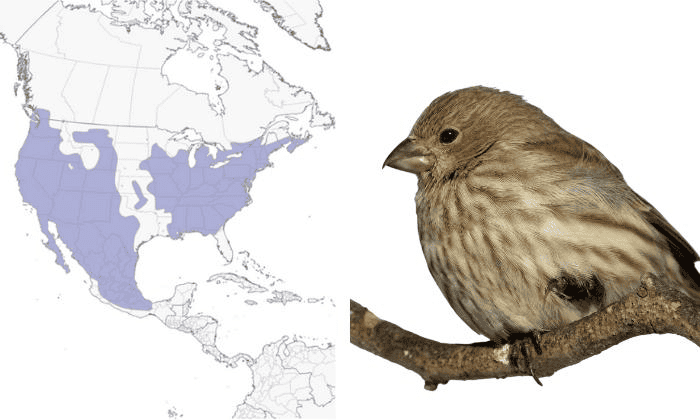
Originally hailing from western North America, the house finch has become a regular year-round sight in eastern Virginia.
The tiny bird is only 5-6 inches with a wing span between 8-10 inches. Males display bright red plumage on their chests and faces, while females are a more subdued brown.
House finches are often spotted in places abundant with trees, from gardens to woodlands. They mainly eat seeds, grains, and flowers but may gobble up insects occasionally.
In general, finches are known to symbolize hope, joy, freedom, and energy across many cultures, from Far Eastern to Native American.
8. Tufted Titmouse (Baeolophus bicolor)
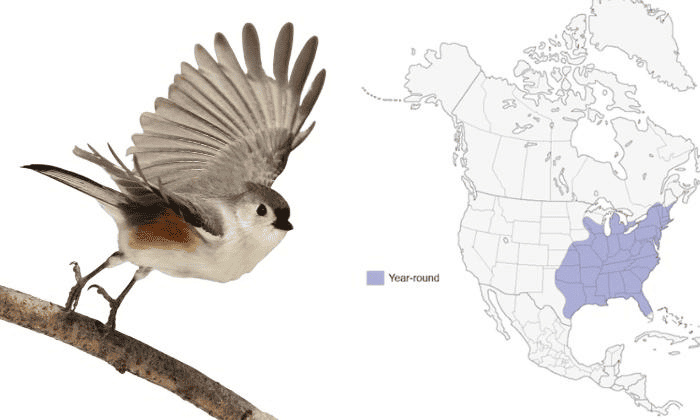
Tufted titmice (or titmouses – it depends on who you ask!) are found in Virginia year-round. Though initially from the Ohio and Mississippi River areas, bird feeders in residential gardens have lured them to expand their territory.
When they aren’t feasting at feeders, these birds eat what they can find on the ground and the tree branches, from berries to nuts to insects.
Tufted titmice sport a small mohawk at the top of the steel-grey heads and small black patches above their beaks. They often have a reddish-orange tinge under their wings. They are small birds, only 6 inches long, and have a maximum wingspan of 10 inches.
9. Carolina Chickadee (Poecile carolinensis)
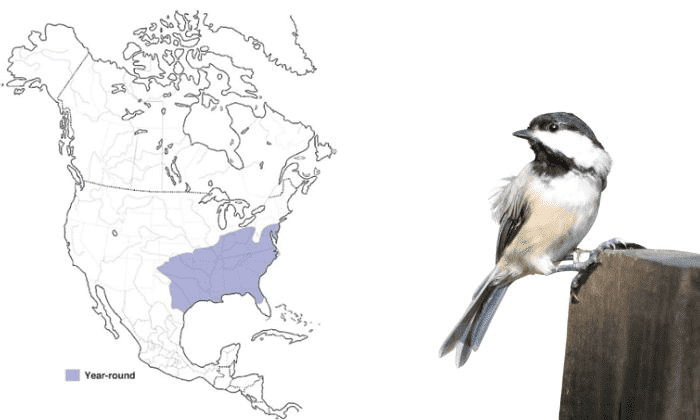
Carolina chickadees are small birds that can’t seem to sit still, constantly hopping around looking for insects, nuts, and seeds. However, despite their apparent restlessness, they stay in Virginia all year.
Only standing at an average of 4 inches tall with a wingspan of 6.5 inches, these chickadees can be tricky to spot in parks, backyards, and forested areas. However, they can easily be heard singing in trees, particularly during their breeding season.
10. American Goldfinch (Spinus tristis)
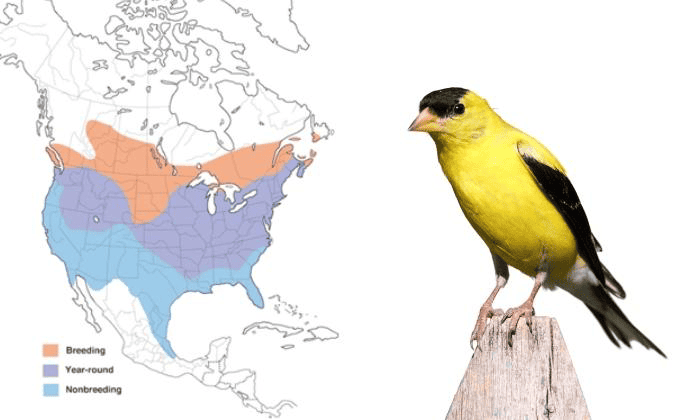
American goldfinches are found all over the state, from northern Virginia to southwest Virginia. They thrive in grassy fields and plains with shrubs for nesting.
These birds have the honor of being the state bird of not only one but two states: New Jersey and Iowa!
Identifying these birds can be tricky because of their varied, changing appearances. Female American goldfinches tend to be a neutral brown all year. However, while males are yellow and black all year, their colors are brighter in the spring and duller in the winter.
11. White-breasted Nuthatch (Sitta carolinensis)
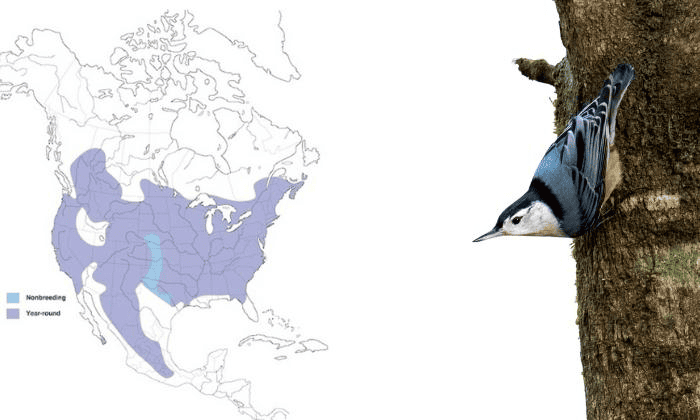
White-breasted Nuthatches are the biggest nuthatch species at 5.5 inches long despite their small size. The mostly blue-gray bird can be spotted in Virginia year-round near forested areas.
These birds “hatch” nuts by securing them in tree corners and breaking them open with sharp bills. When they aren’t enjoying these treats, they eat insects and seeds.
These birds are also known for their acrobatic ability to climb down trees headfirst. This ability causes some people to associate the bird with courage, determination, and perseverance.
12. Northern Mockingbird (Mimus polyglottos)
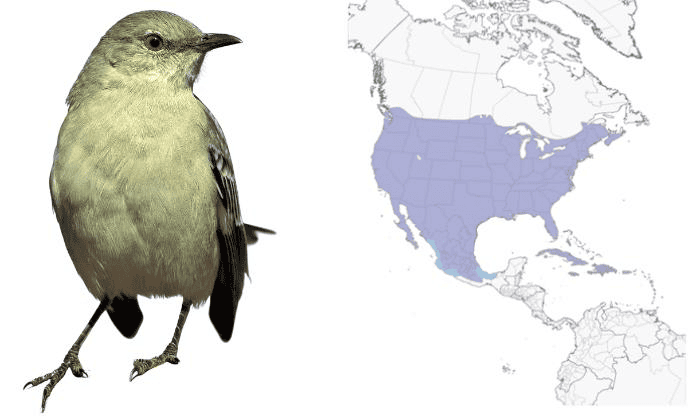
Northern Mockingbirds aren’t prevalent only in Virginia–they are so common throughout the country that five states have named it their state bird: Arkansas, Florida, Mississippi, Tennessee, and Texas.
These grey birds are typically 10 inches long with a wingspan of 12-15 inches. They are known for mimicking the sounds of other bird species and things in their environment, such as car alarms.
Northern Mockingbirds are commonly found in residential areas, roadsides, grassy plains, and forest edges. They are omnivores that enjoy insects and berries.
13. European Starling (Sturnus vulgaris)
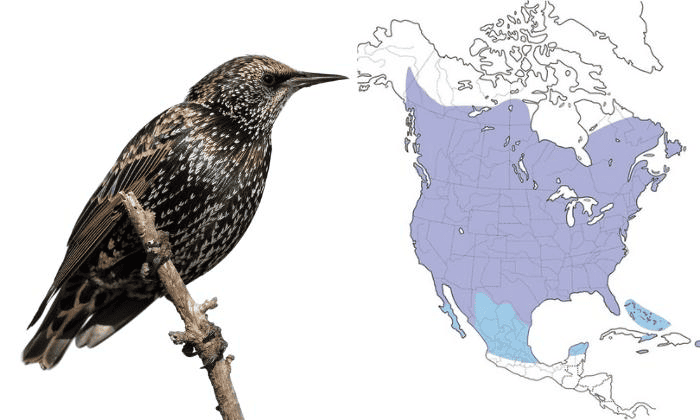
European starlings were introduced to the United States in the 19th century and, since then, have grown rampant enough to be considered an invasive species.
These birds are known for both their destructive streak and beauty. European Starlings adjust their looks to the seasons, appearing dark and glossy in the summer but spotted white in the winter.
It’s almost impossible not to spot this bird wherever you go. They are seen in city parks, fields, lawns, and residential areas. When not visiting bird feeders, they satiate themselves with fruit, grains, seeds, and insects.
14. American Crow (Corvus brachyrhynchos)
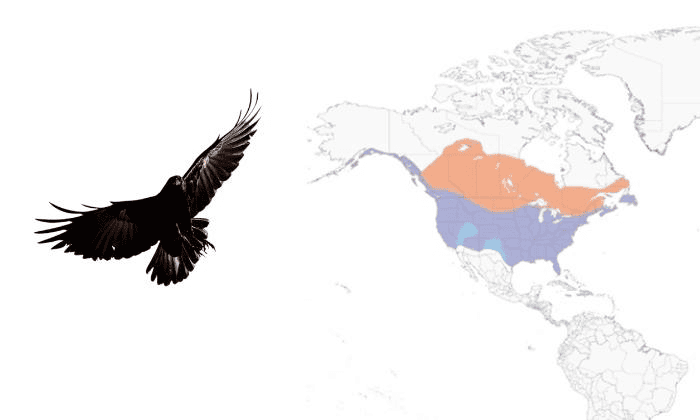
American crows are so widespread in the country that there have been efforts to exterminate them to curb their population size. However, these efforts have failed: the sturdy, resilient American Crow is as prevalent as ever!
American Crows are the largest crows in America, measuring 16-21 inches long. They are also known to be extremely intelligent and display problem-solving skills.
These skills are often employed in their foraging for food. American Crows know how to crack nuts open, dig pits to search for clams, and even distract other animals to steal their prey.
For many cultures, crows are seen as signs of change and transformation. Generally, they represent in-betweens: old and new, physical and spiritual, life and death. Native American cultures consider the bird a divine messenger.
15. Eastern Bluebird (Sialia sialis)
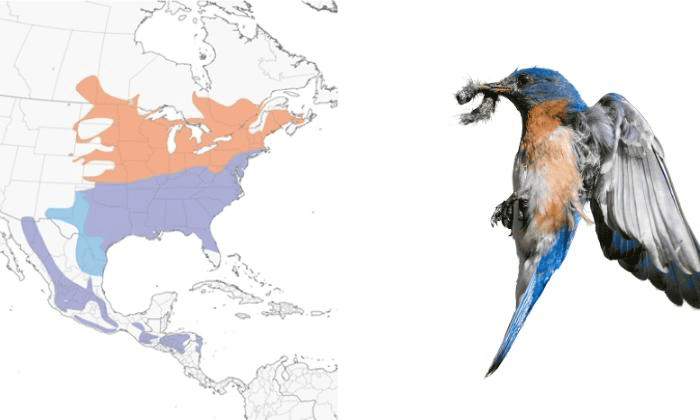
Eastern bluebirds are migratory backyard birds. While they can be found in Virginia year-round, they become more populous between February to October when flocks from the north of the continent fly south.
They are mainly insectivores but switch to eating berries and seeds during the winter. They can commonly be found in fields, parks, and backyards.
These are small birds, only about 8.3 inches long, with a wingspan of 12.6 inches on the high end. While all Eastern bluebirds are blue, orange, and white, males display brighter-colored plumage than females.
Because of their cheerful song and deep colors, Eastern bluebirds are typically associated with happiness, hope, freedom, tranquility and prudence.
16. Common Grackle (Quiscalus quiscula)
Grackles are most easily spotted in Virginia during summer. These birds are easily picked out against other blackbirds because of their glossy feathers.
The Common Grackle is about 12 inches long with a wingspan of 16 inches. They live in open habitats such as parks, marshes, and fields and mainly eat plants, particularly corn.
Unfortunately, this has led many farmers to label them as agricultural pests because of their tendency to feast on crops!
These birds are sociable creatures that often flock together with other blackbirds, including red-winged blackbirds and European starlings. However, they aggressively shove their companions aside when food enters the picture.
17. Indigo Bunting (Passerina cyanea)
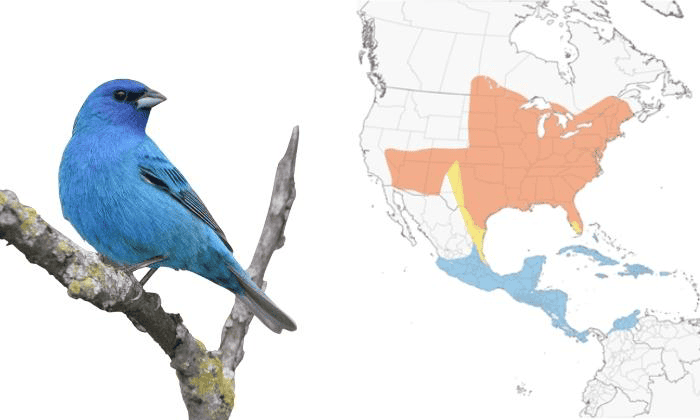
Indigo buntings are bright blue birds with long tails and silver bills, giving them the name “blue canaries.” They are also very small, most being less than 5 inches long, with a wingspan of 8 inches.
These birds are easily found in Virginia but only during the summer months. Their season may be related to the symbolism Native Americans attach to them of change and new things to come.
Like how trees let go of their past leaves in the fall, people believe that seeing an Indigo bunting is a sign of letting go of things that no longer serve you soon.
Indigo buntings live at the edges of forests and farmlands. Their preferred diet consists of seeds, berries, buds, and insects.
18. Dark-eyed Junco (Junco hyemalis)
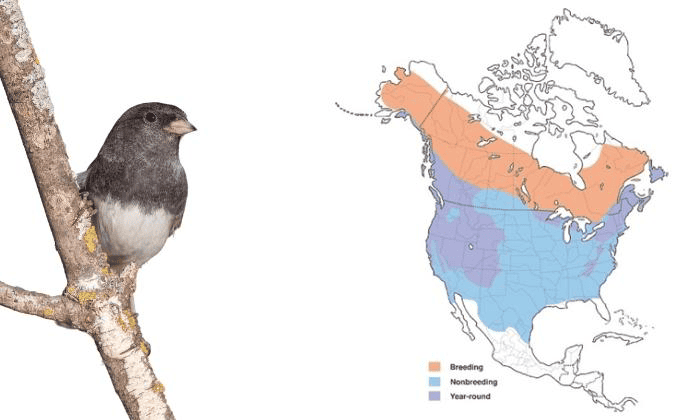
The Dark-eyed Junco is a small grey bird with a white belly, commonly seen in Virginia during the winter, giving it the nickname “snowbird.”
In particular, these sparrows can be found hopping along the ground of forests and woodlands, foraging for insects and seeds.
The bird is typically 6 inches long with a wingspan of 8 inches. It is one of fifteen recognized North American junco subspecies.
Dark-eyed Juncos is one of the black and white birds representing practicality, abundance, and all the warm, happy feelings that come with winter and the holidays.
Conclusion
It may be challenging to identify all of Virginia’s 400 species in one sitting–but learning about the eighteen common birds in Virginia is a good start!
Keep your eyes and ears open the next time you walk through the park or in your garden. Can you spot any of the birds on this list? And if you spot any unfamiliar birds, note them down to look up later.
Happy birding from us to you!

George and I became friends after a birdwatching trip with our new group. And we have been enjoying every adventure together. When he told me the idea of establishing a site that shares our experiences and fun, I immediately agreed. After trials and errors, here we have Thayerbirding.


